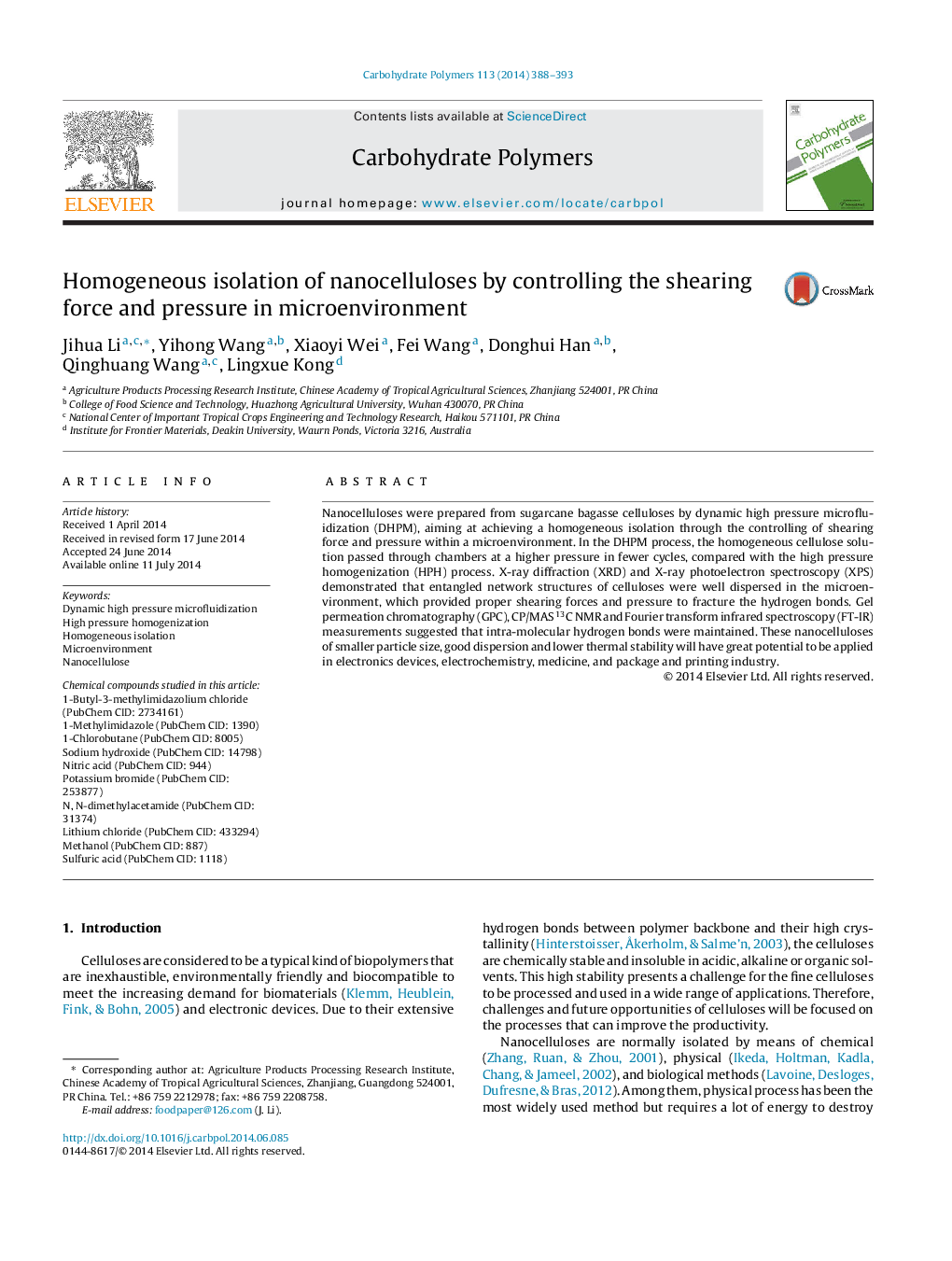| Article ID | Journal | Published Year | Pages | File Type |
|---|---|---|---|---|
| 7791079 | Carbohydrate Polymers | 2014 | 6 Pages |
Abstract
Nanocelluloses were prepared from sugarcane bagasse celluloses by dynamic high pressure microfluidization (DHPM), aiming at achieving a homogeneous isolation through the controlling of shearing force and pressure within a microenvironment. In the DHPM process, the homogeneous cellulose solution passed through chambers at a higher pressure in fewer cycles, compared with the high pressure homogenization (HPH) process. X-ray diffraction (XRD) and X-ray photoelectron spectroscopy (XPS) demonstrated that entangled network structures of celluloses were well dispersed in the microenvironment, which provided proper shearing forces and pressure to fracture the hydrogen bonds. Gel permeation chromatography (GPC), CP/MAS 13C NMR and Fourier transform infrared spectroscopy (FT-IR) measurements suggested that intra-molecular hydrogen bonds were maintained. These nanocelluloses of smaller particle size, good dispersion and lower thermal stability will have great potential to be applied in electronics devices, electrochemistry, medicine, and package and printing industry.
Keywords
Dynamic high pressure microfluidizationLithium Chloride (PubChem CID: 433294)Sulfuric acid (PubChem CID: 1118)Nitric acid (PubChem CID: 944)Methanol (PubChem CID: 887)MicroenvironmentNanocelluloseHigh pressure homogenizationSodium hydroxide (PubChem CID: 14798)Potassium bromide (PubChem CID: 253877)
Related Topics
Physical Sciences and Engineering
Chemistry
Organic Chemistry
Authors
Jihua Li, Yihong Wang, Xiaoyi Wei, Fei Wang, Donghui Han, Qinghuang Wang, Lingxue Kong,
